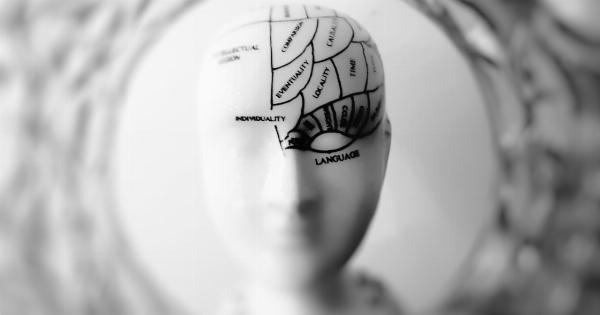Aneurysms and strokes are two serious medical conditions that affect the brain. While both conditions share similar symptoms, they have different causes, risk factors, and treatment options.
It’s crucial to get a proper diagnosis to ensure the right treatment and prevent irreversible damage. In this article, we’ll discuss the differences between aneurysms and strokes and how to tell them apart.
What is an Aneurysm?
An aneurysm is a bulge in the wall of a blood vessel that occurs when the vessel weakens and expands. The most common type of aneurysm is called a cerebral aneurysm, which occurs in the brain’s blood vessels.
Aneurysms are often asymptomatic and may go unnoticed until they rupture or leak. When an aneurysm ruptures, it causes bleeding in the brain, which can lead to a stroke, brain damage, or death if not treated promptly.
Ruptured aneurysms are life-threatening and require emergency medical attention.
What is a Stroke?
A stroke occurs when the blood supply to the brain is blocked or reduced, causing brain cells to die. There are two main types of strokes: ischemic stroke and hemorrhagic stroke.
Ischemic strokes occur when a blood clot or plaque buildup blocks an artery that supplies blood to the brain. Hemorrhagic strokes occur when a blood vessel in the brain ruptures, causing bleeding in the brain.
Both types of strokes require immediate medical attention to prevent further damage to the brain and improve the chances of recovery.
The treatment for a stroke depends on the severity and type of stroke and may include medications, surgery, or rehabilitation.
What are the Symptoms of an Aneurysm?
Aneurysms may not cause any symptoms in some cases, but when they do, they can include:.
- Headaches
- Blurred or double vision
- Neck pain or stiffness
- Dizziness or lightheadedness
- Numbness or weakness on one side of the face or body
- Sensitivity to light
- Seizures
- Loss of consciousness
It’s important to note that not all symptoms may be present, and some symptoms may be similar to those of other medical conditions.
What are the Symptoms of a Stroke?
The symptoms of a stroke can vary depending on the type and severity of the stroke and may include:.
- Sudden numbness or weakness on one side of the face, arm, or leg
- Difficulty speaking or understanding speech
- Confusion
- Trouble seeing in one or both eyes
- Dizziness or loss of balance or coordination
- Severe headache with no known cause
It’s important to note that time is critical when it comes to strokes, and immediate medical attention is necessary to prevent brain damage or death.
What are the Risk Factors for an Aneurysm?
Several risk factors can increase the likelihood of developing an aneurysm, including:.
- High blood pressure
- Smoking
- Family history of aneurysms or other vascular disorders
- Age over 40
- Gender (women are more likely to develop aneurysms than men)
What are the Risk Factors for a Stroke?
The risk factors for a stroke depend on the type of stroke:.
Ischemic Stroke:
- High blood pressure
- Diabetes
- High cholesterol
- Heart disease or atrial fibrillation (irregular heartbeat)
- Tobacco use
Hemorrhagic Stroke:
- Aneurysms or other blood vessel abnormalities
- Blood-thinning medications
- Illicit drug use
How are Aneurysms and Strokes Diagnosed?
To diagnose an aneurysm or stroke, a healthcare provider may perform several tests and procedures, including:.
Aneurysms:
- Computed Tomography (CT) Scan
- Magnetic Resonance Imaging (MRI)
- Cerebral angiogram
- Lumbar puncture (spinal tap)
Strokes:
- Physical examination and medical history review
- Complete Blood Count (CBC) test
- Blood clotting tests
- Carotid ultrasound
- Magnetic Resonance Imaging (MRI)
- Cerebral angiogram or other imaging tests to confirm the type and location of the stroke
How are Aneurysms and Strokes Treated?
The treatment for aneurysms and strokes varies depending on the type and severity of the condition:.
Aneurysms:
- Observation – if the aneurysm is small and not producing symptoms, a doctor may recommend monitoring it closely.
- Endovascular coiling – this minimally invasive procedure involves inserting a coil into the aneurysm to prevent blood from flowing into it.
- Clipping – this involves placing a surgical clip on the neck of the aneurysm to prevent it from rupturing.
- Surgical Aneurysm Repair – In some cases, surgical intervention is necessary, which involves repairing the aneurysm with a graft or replacement vessel.
Strokes:
- Ischemic Stroke – treatment may include medications to dissolve blood clots or prevent clots from forming, or surgery to remove the clot.
- Hemorrhagic stroke – treatment may include drugs to control blood pressure, surgery to remove the blood, or coiling or clipping of the aneurysm if bleeding is caused by an aneurysm rupture.
Rehabilitation therapy is also critical for many stroke survivors and aims to improve motor skills, speech, and other functions affected by the stroke.
Conclusion
Aneurysms and strokes are two serious medical conditions that require prompt medical attention. While they share similar symptoms, they have different causes, risk factors, and treatment options.
Proper diagnosis and treatment are crucial to prevent irreversible damage and improve outcomes. If you suspect you or someone you know is experiencing symptoms of an aneurysm or stroke, seek medical attention immediately.






























